If you are wondering why you should take a mathematics test, the answer is simple: skills matter. By taking the test, you will:
- know where you stand in the community of AI practitioners
- review your performance to learn about your strengths and weaknesses
- access personalized study plan to prepare for interviews
- fast track to job opportunities within our network
- get a certificate
And, it’s free. Your results are only ever shared with your permission to refer you to a company. Let’s go over the mathematics test.
I What is the mathematics test
The mathematics test is one of six standardized tests that were developed by a team of AI and assessment experts at Workera to evaluate the skills of people working as a Data Scientist (DS), Data Analyst (DA), Machine Learning Engineer (MLE), Deep Learning Engineer (DLE), Machine Learning Researcher (MLR), or Deep Learning Researcher (DLR). It is comprised of multiple choice questions selected from a large database, so that different test takers get different questions, and takes 14 minutes to complete.
You can learn more about these roles in our AI Career Pathways report and about the other tests in The Skills Boost.
II What to expect in the mathematics test
Before taking a test, it is important to understand what it evaluates and how it is graded. The grading rubric for the mathematics test includes three categories:
- Working with linear algebra, which covers linear algebra methods used in AI including matrix/vector operations (e.g., dot product, outer product, summation, multiplications, transposition, inverse, determinant etc.), matrix/vector properties (e.g., eigenvectors, eigenvalues, etc.) and equations involving vectors and matrices.
- Working with mathematical functions, which emcompasses major functions used in AI such as distances (e.g., Euclidian norm, L1 norm etc.), activation functions (e.g. sigmoid, ReLU, tanh, softmax, etc.), basic trigonometric functions (e.g., cosine and sine), function arguments (e.g., min, max, argmin, argmax, etc.), and properties (e.g., convexity, concavity, etc.)
- Understanding calculus, which spans differential calculus (e.g., derivatives of major functions in low and high dimensions) and integral calculus (e.g., integrals of major functions, integral by parts, etc.)
You will be evaluated and assigned to a skill level in each category: beginning, developing, or accomplished, depending on your mastery of the skill at hand. Your skill level in mathematics will be determined using a combination of your scores across all three categories.
You can learn about the categories and performance levels in the table below.
| Category | Beginning | Developing | Accomplished |
|---|---|---|---|
| Working with linear algebra | Demonstrates limited understanding of linear algebra methods used in AI. | Demonstrates ability to understand linear algebra concepts used in classic AI algorithms such as linear regression, logistic regression, PCA, ICA, k-nearest neighbors, k-means, and the like. | Demonstrates ability to leverage linear algebra in creating custom solutions to novel problems. This includes understanding linear algebra used in research papers and manipulating mathematical objects and equations. |
| Working with mathematical functions | Demonstrates limited understanding of basic mathematical functions and their properties. | Demonstrates ability to use functions and their properties with some effectiveness. This includes understanding and implementing functions used in classic AI algorithms. | Demonstrates ability to leverage functions and their properties in creating custom solutions to novel problems. This includes understanding functions mentioned in research papers and coming up with new functions. |
| Understanding calculus | Demonstrates limited understanding of integrals and derivatives. | Demonstrates ability to work with integrals and derivatives of major functions with some effectiveness. | Demonstrates ability to understand concepts from calculus widely used in research papers. |
At the end of the test, you’ll see your overall skill category in mathematics.
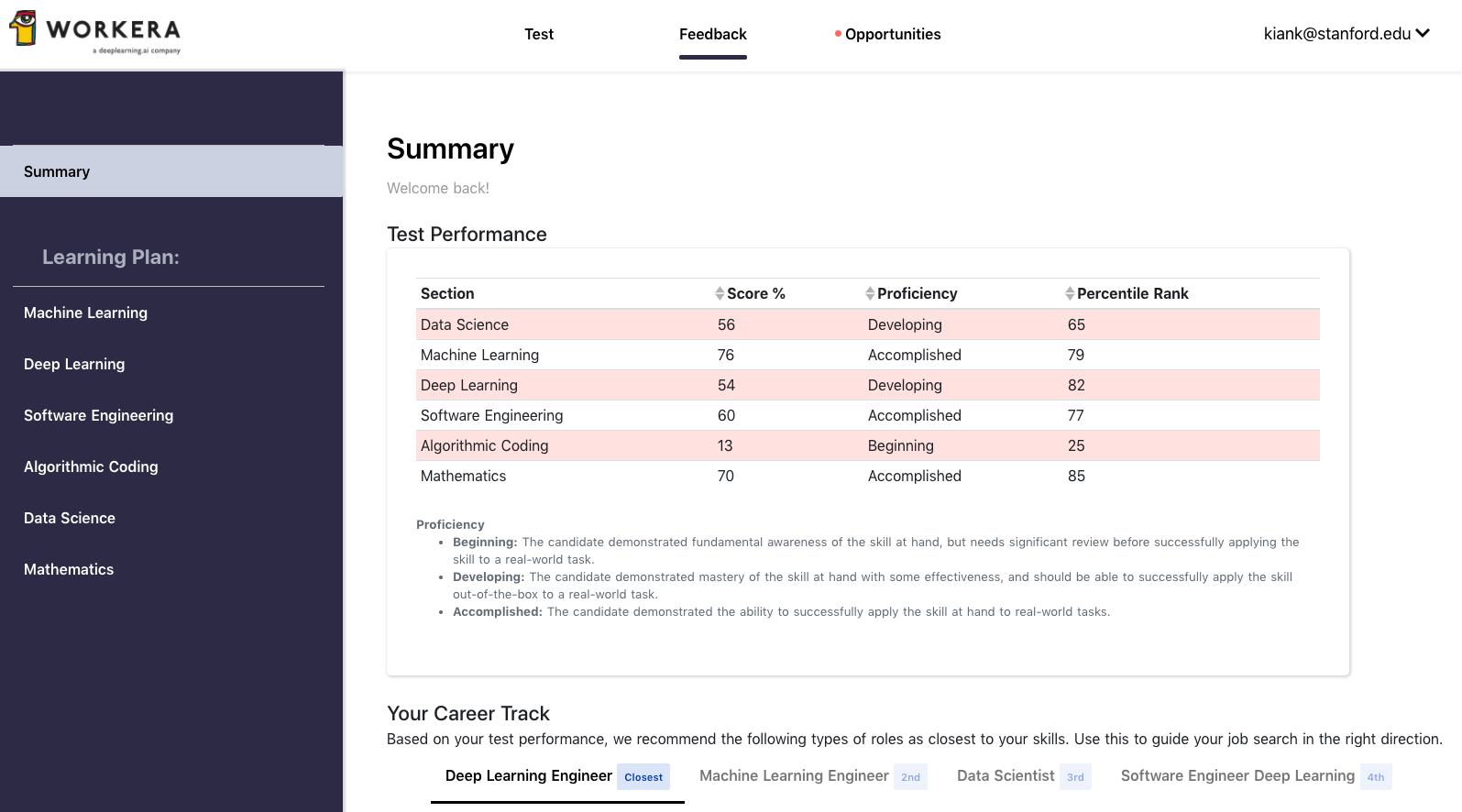
You will also receive feedback for every skills evaluated (e.g., Understanding the relationship between the determinant of a matrix and its invertibility or Taking the dot product of a matrix and a vector).
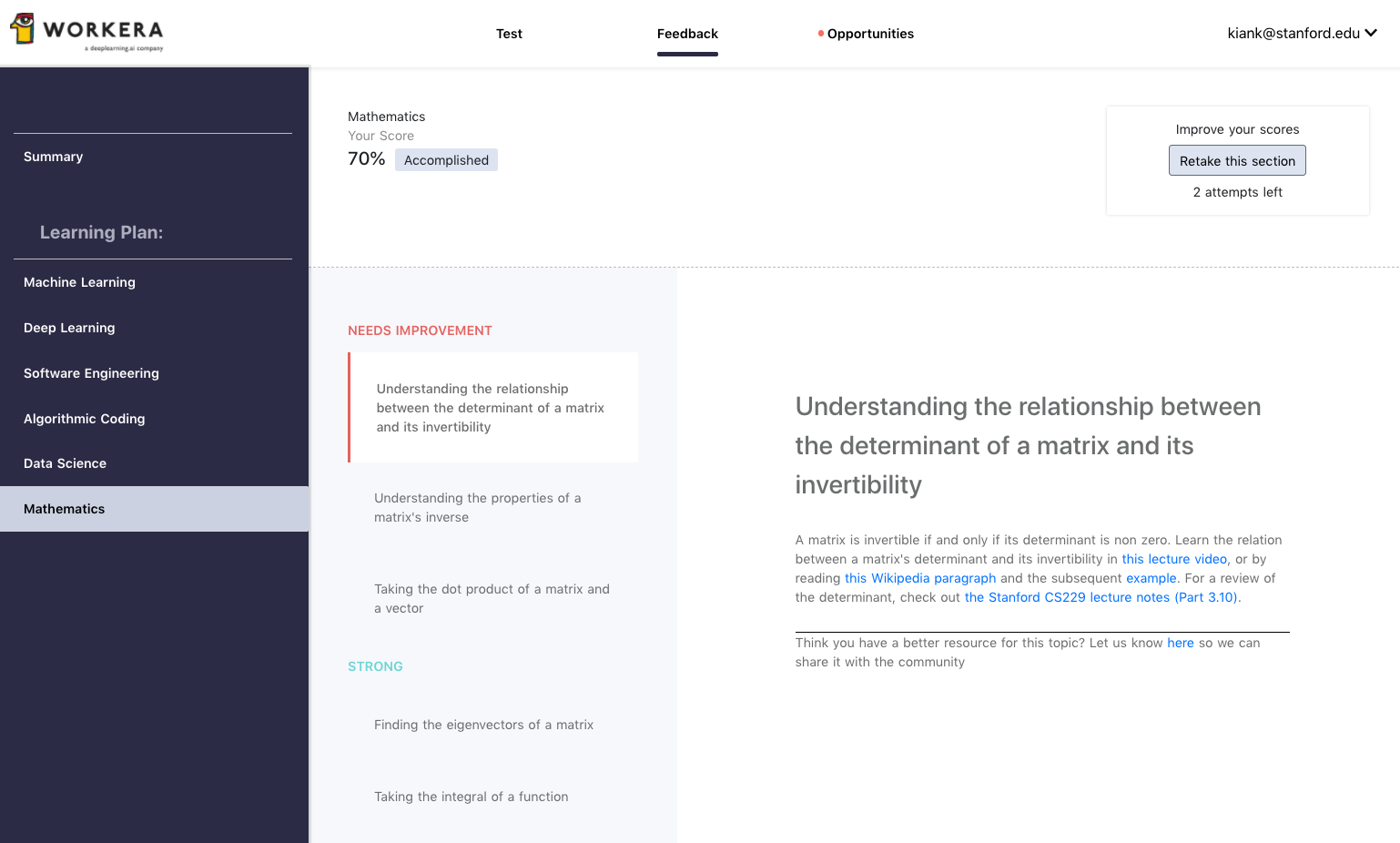
III Mathematics practice questions
Nothing beats practice! Here are examples of questions you might encounter in the mathematics test. Think carefully before selecting your answer. Then, click submit to see the answer and get feedback.
Question 1: Angle between two vectors
Question 2: Determinant use cases
Question 3: Softmax function
Question 4: Integral of a function
IV Tips for the mathematics test
Now that you know what to expect in our mathematics test, it’s time to take it! You can take the test up to three times in a 90-day period (unless the test is being administered to you by a company for a job) and your results are only ever shared with your permission. The first test is simply meant to act as a baseline to show you where to start studying. So why wait? Sign up here to take the mathematics test.
Consider the vectors $\bold{a}=\begin{pmatrix}1 \\ 1 \\ 0\end{pmatrix}$ and $\bold{b}=\begin{pmatrix}1 \\ 0 \\ 1\end{pmatrix}$. What is the acute angle between $\bold{a}$ and $\bold{b}$ in radians?
$0$
$\pi/4$
$\pi/3$
$\pi/2$
For which of the following use cases would you compute the determinant of a matrix?
To verify that a matrix is invertible.
To check if the matrix is diagonalizable.
To check if the matrix is positive definite.
None of the above.
The softmax function is used to convert an $n$-dimensional vector $x = (x_1, x_2, \cdots, x_n)^T$ into probabilities. It is defined as $softmax(x) = (\frac{e^{x_1}}{\textstyle\sum_{i=1}^ne^{x_i}}, \frac{e^{x_2}}{\textstyle\sum_{i=1}^ne^{x_i}}, \cdots, \frac{e^{x_n}}{\textstyle\sum_{i=1}^ne^{x_i}})^T$. What is the softmax of $x = \begin{pmatrix} \ln(2) \\ 0 \\ 0 \end{pmatrix}$?
$\begin{pmatrix} 1 \\ 0 \\ 0 \end{pmatrix}$
$\frac{1}{6}\begin{pmatrix} 4 \\ 1 \\ 1 \end{pmatrix}$
$\frac{1}{4}\begin{pmatrix} 2 \\ 1 \\ 1 \end{pmatrix}$
$\frac{1}{3}\begin{pmatrix} 1 \\ 1 \\ 1 \end{pmatrix}$
Consider the slope function $f'(x) = \begin{cases} 0 &\text{if } x < 0 \\ 1 &\text{if } x > 0 \end{cases}$. Which of the following is a possible function for $f$?
$f(x) = x \quad \text{if } x > 0$
$f(x) = \begin{cases} x &\text{if } x < 0 \\ x^2/2 &\text{if } x > 0 \end{cases}$
$f(x) = \begin{cases} 1 &\text{if } x < 0 \\ x + 1 &\text{if } x > 0 \end{cases}$
$f(x) = \begin{cases} 0 &\text{if } x < 0 \\ 1 &\text{if } x > 0 \end{cases}$
Other tests include machine learning, deep learning, data science, algorithmic coding, and software engineering.
 Data scientists carry out data engineering, modeling, and business analysis tasks. They demonstrate solid scientific foundations as well as business acumen (see Figure above). Communication skills are usually required, but the level depends on the team.
Data scientists carry out data engineering, modeling, and business analysis tasks. They demonstrate solid scientific foundations as well as business acumen (see Figure above). Communication skills are usually required, but the level depends on the team.
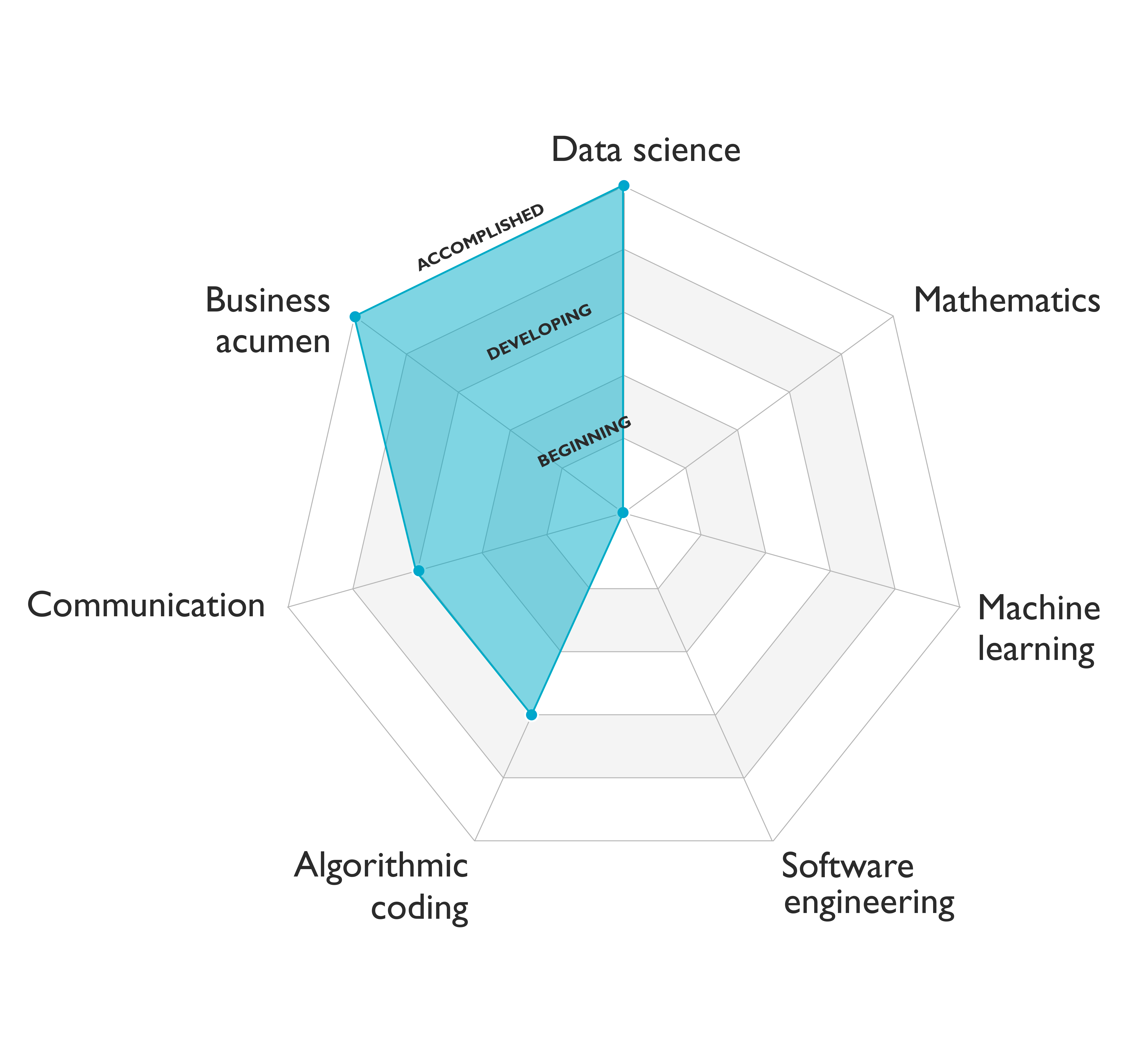 Data analysts carry out data engineering and business analysis tasks as shown in the figure above. Their skills complement those of people who train models, deploy them, and build software infrastructure. They demonstrate solid analytical skills as well as business acumen. They are accomplished in query languages such as SQL and commonly use spreadsheet software tools. However, they don’t need algorithmic coding skills. Communication skills are usually required, but the level depends on the team.
Data analysts carry out data engineering and business analysis tasks as shown in the figure above. Their skills complement those of people who train models, deploy them, and build software infrastructure. They demonstrate solid analytical skills as well as business acumen. They are accomplished in query languages such as SQL and commonly use spreadsheet software tools. However, they don’t need algorithmic coding skills. Communication skills are usually required, but the level depends on the team.
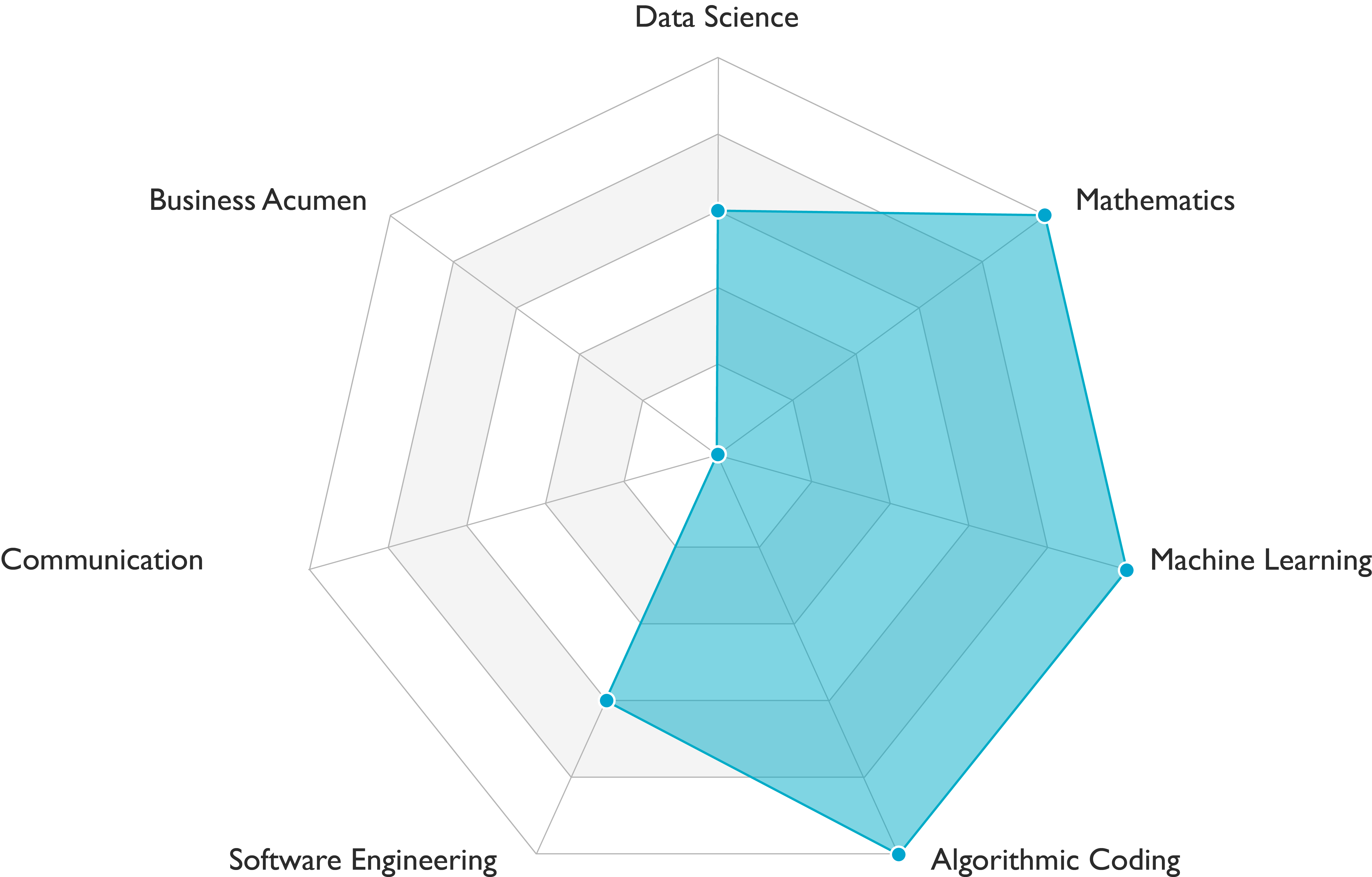 Machine learning engineers carry out data engineering, modeling, and deployment tasks. They demonstrate solid scientific and engineering skills (see Figure above). Communication skills requirements vary among teams.
Machine learning engineers carry out data engineering, modeling, and deployment tasks. They demonstrate solid scientific and engineering skills (see Figure above). Communication skills requirements vary among teams.
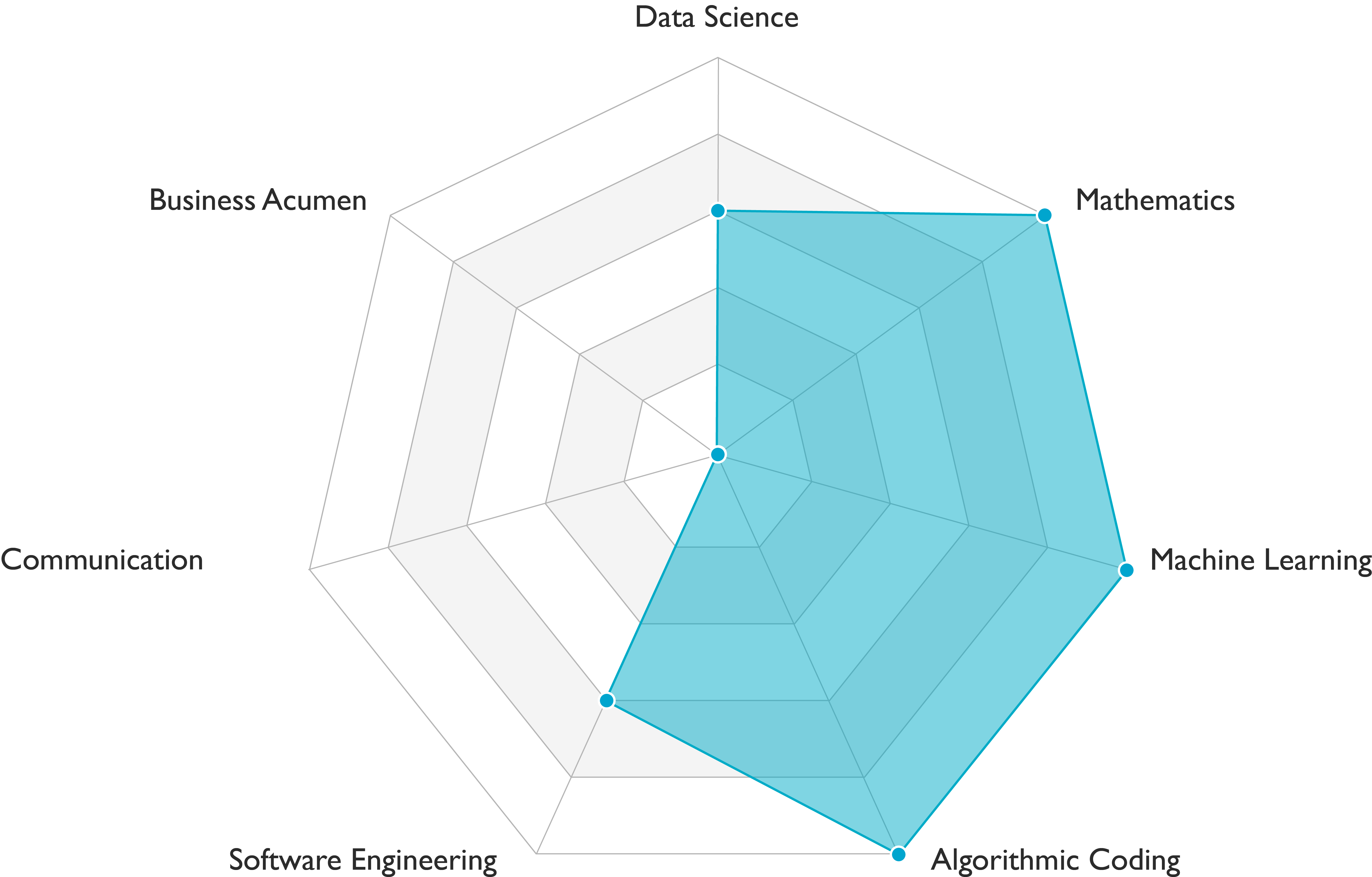 Deep learning engineers carry out data engineering, modeling, and deployment tasks. They demonstrate solid scientific and engineering skills. Communication skills requirements vary among teams. This role is a variant of machine learning engineer. It requires deep learning skills in addition to the skills profile presented in the figure above.
Deep learning engineers carry out data engineering, modeling, and deployment tasks. They demonstrate solid scientific and engineering skills. Communication skills requirements vary among teams. This role is a variant of machine learning engineer. It requires deep learning skills in addition to the skills profile presented in the figure above.
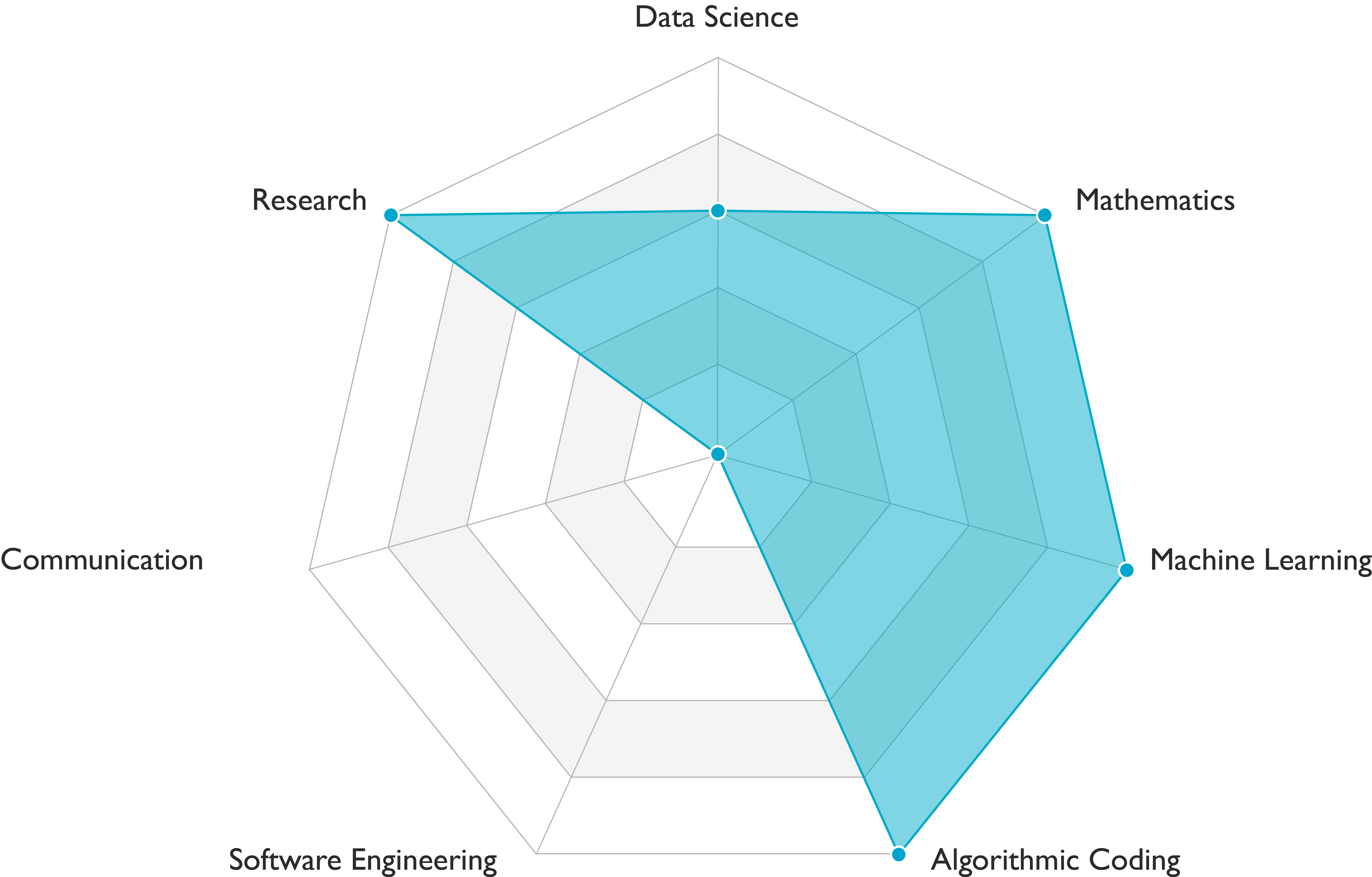 Machine learning researchers carry out data engineering and modeling tasks. They demonstrate outstanding scientific skills (see Figure above). Communication skills requirements vary among teams.
Machine learning researchers carry out data engineering and modeling tasks. They demonstrate outstanding scientific skills (see Figure above). Communication skills requirements vary among teams.
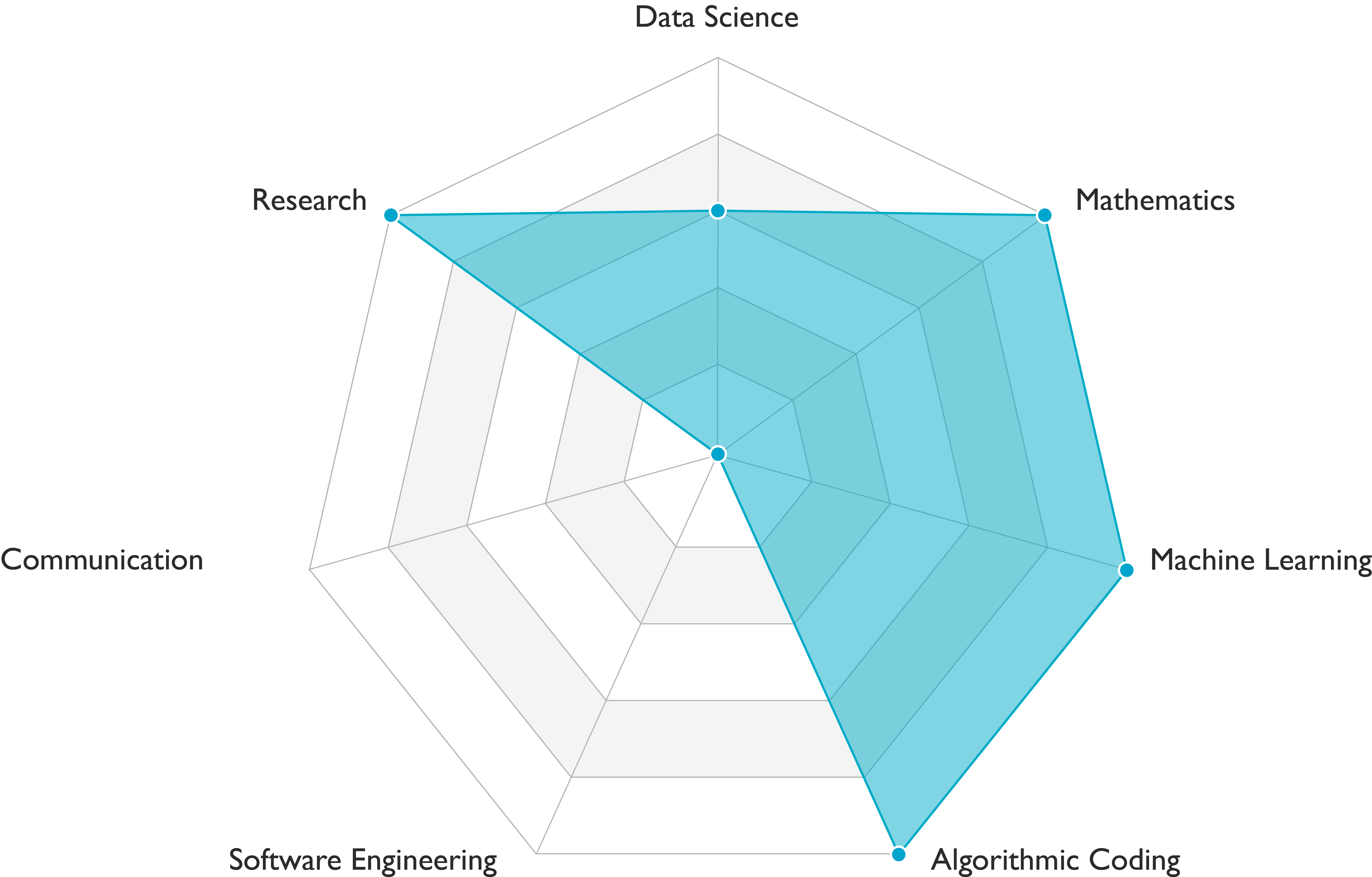 Deep learning researchers carry out data engineering and modeling tasks. They demonstrate outstanding scientific skills (see Figure above). Communication skills requirements vary among teams. This role is a variant of machine learning researcher. It requires deep learning skills in addition to the skills profile presented in the figure above.
Deep learning researchers carry out data engineering and modeling tasks. They demonstrate outstanding scientific skills (see Figure above). Communication skills requirements vary among teams. This role is a variant of machine learning researcher. It requires deep learning skills in addition to the skills profile presented in the figure above.



